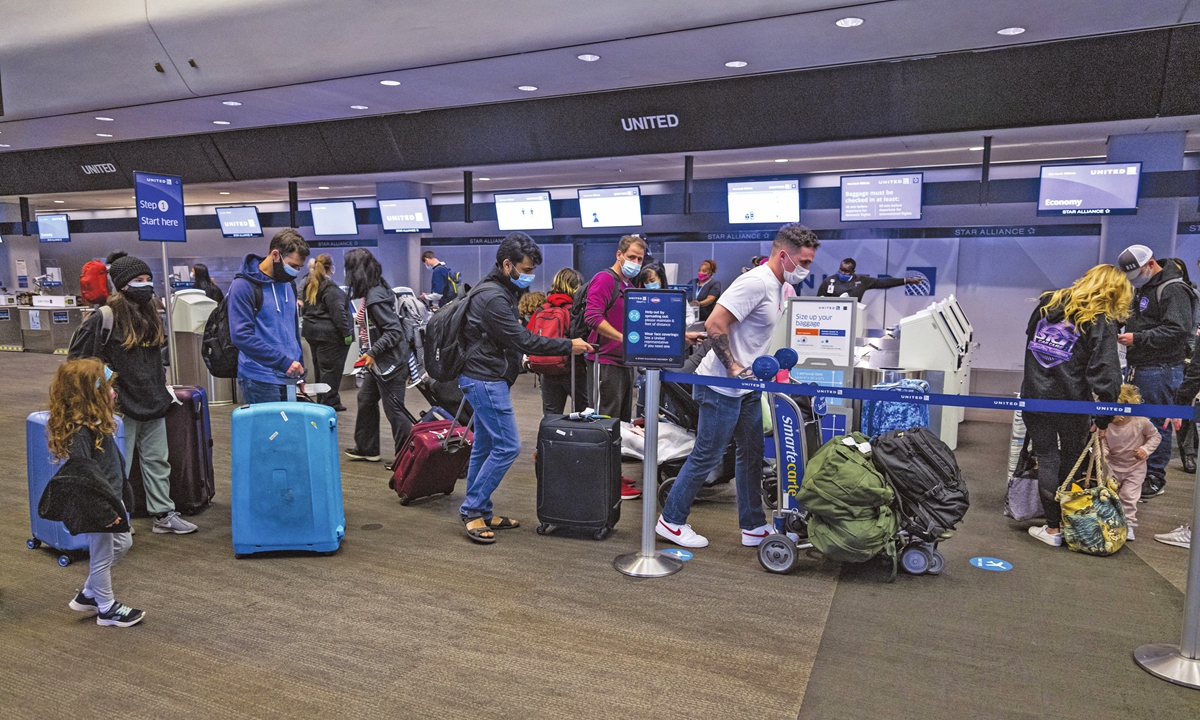Study finds money lost in US lockdowns
Source: AFP Published: 2020/11/24 18:18:40
There's little doubt that government-ordered business shutdowns to stop the spread of COVID-19 damaged the US economy, but the exact cost is unclear.

"Governors saved lives on the one hand, but reduced economic activity on the other," said Jean-Noel Barrot, a professor at HEC Paris and member of France's National Assembly.
Addressing the world's largest coronavirus outbreak is a critical question in the US, where the virus has infected more than 12.2 million people and killed nearly 257,000.
Unprecedented shutdown
The March orders were applied unevenly by state and local governments, but caused unprecedented disruptions to the world's largest economy, prompting debates over how far the government's reach should go to protect public health.
A June study published in Nature found that without social distancing and business restrictions, the US would have seen cases hit 5.2 million in early April, rather than their actual level of around 365,000.
Columbia University researchers meanwhile found that more than 35,000 lives could have been saved had such measures been put in place just a week earlier than their mid-March imposition.
Though nowhere near as stringent as in other countries where curfews were strictly enforced and rule-breakers penalized, the restrictions' effects on the US economy occurred almost immediately. Weekly applications for jobless aid shot up, with nearly 6.9 million filings in the week ended March 28, while the unemployment rate skyrocketed to 14.7 percent in April from its historic low of 3.5 percent in February.
Newspaper headline: Cost of safety

Passengers wearing protective masks check in at the San Francisco International Airport boarding area, in San Francisco, California, the US on Tuesday. Photo: VCG
HEC Paris Business School and Bocconi University in Milan researchers reached a sobering calculation: The closures beginning at the pandemic's onset in March through May saved 29,000 lives - at a cost of $169 billion, around $6 million per person."Governors saved lives on the one hand, but reduced economic activity on the other," said Jean-Noel Barrot, a professor at HEC Paris and member of France's National Assembly.
Addressing the world's largest coronavirus outbreak is a critical question in the US, where the virus has infected more than 12.2 million people and killed nearly 257,000.
Unprecedented shutdown
The March orders were applied unevenly by state and local governments, but caused unprecedented disruptions to the world's largest economy, prompting debates over how far the government's reach should go to protect public health.
A June study published in Nature found that without social distancing and business restrictions, the US would have seen cases hit 5.2 million in early April, rather than their actual level of around 365,000.
Columbia University researchers meanwhile found that more than 35,000 lives could have been saved had such measures been put in place just a week earlier than their mid-March imposition.
Though nowhere near as stringent as in other countries where curfews were strictly enforced and rule-breakers penalized, the restrictions' effects on the US economy occurred almost immediately. Weekly applications for jobless aid shot up, with nearly 6.9 million filings in the week ended March 28, while the unemployment rate skyrocketed to 14.7 percent in April from its historic low of 3.5 percent in February.
Newspaper headline: Cost of safety
Posted in: AMERICAS